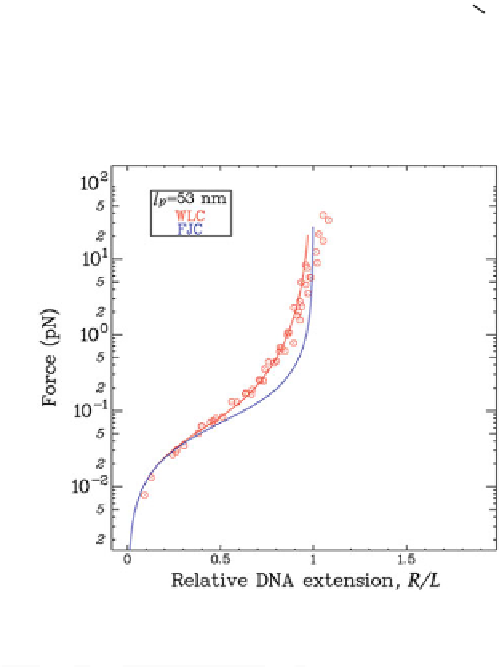Biomedical Engineering Reference
In-Depth Information
Fig. 6.5
The scheme of
WLC model
l
p
R
Fig. 6.6
Experimental force
curve of dsDNA (
circles
)and
the fitting curves (
solid lines
)
(Reprinted from Ref. [
21
],
Copyright 1998, with
permission from Elsevier)
l
p
k
B
T
R
L
1
4Œ1
R.F /=L
2
1
4
F
D
C
(6.1)
where
R
is the end-to-end distance (i.e., the measured length) of a polymer chain at
a given stretching force
F
,
k
B
is the Boltzmann constant,
T
is the temperature in the
Kelvin scale,
L
is the contour length of the polymer chain.
The fitting process can be regarded as the process of seeking the approximate
solution of
l
p
in a heuristic way. It was reported by Bustamante et al. that the
l
p
of
dsDNA is 53 nm in physiological condition, which corresponds to the length of 150
base pairs; see Fig.
6.6
. This result implies that the dsDNA is rather rigid (Fig.
6.7
).
The FJC model treats a polymer as a chain of statistically independent segments
of length
l
k
(Kuhn segment length). The length of the segment is fixed, in other
words, the modulus of the polymer chain is infinite. The segments follow a random
walk in the 3D space. In FJC model, the elasticity of a chain purely comes from








Search WWH ::

Custom Search